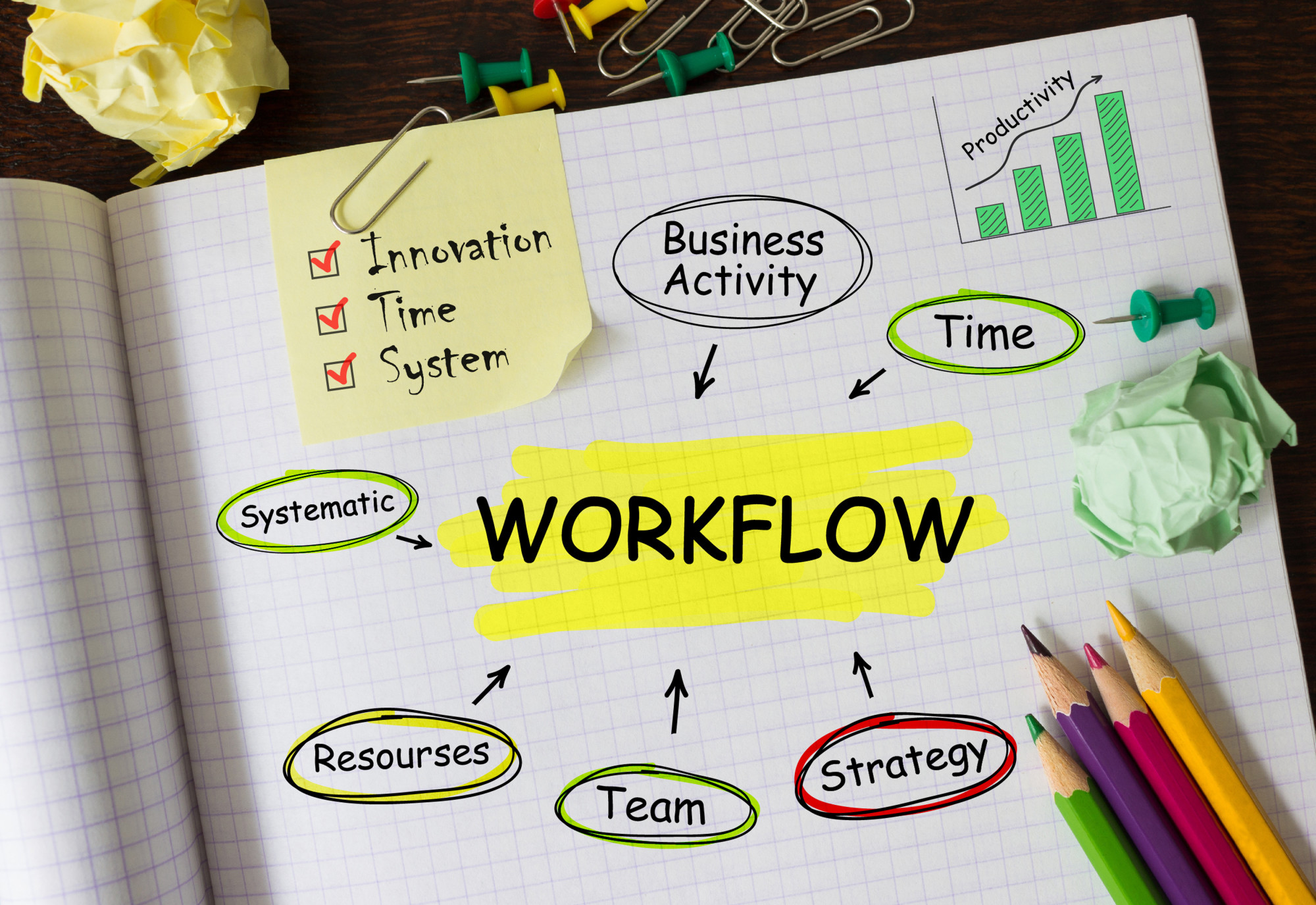If you’re going to follow in the average company’s footsteps and spend up to 30% of your revenue on marketing, it’s only right to have an efficient process. Usually, a marketing workflow does the trick—but it can be adjusted to make things go even more smoothly.
Imagine being able to relax while your marketing campaigns do all the heavy lifting to attract customers. It sounds like a dream come true, right? Well, it’s possible and it’s not as hard as you might think.
Keep reading for more information on marketing automation and how it can streamline your business processes.
Contents
What Is a Marketing Workflow?
Marketing workflow is a set of steps you can take to promote your business, product, or service. A key feature is repeating specific actions over and over.
For example, if your goal is to get more customers through the door, reminding people about upcoming sales events would be a part of your workflow.
Marketing Workflow Examples
Let’s say a customer signs up for a free 30-day trial of a product. The first phase of the workflow would be for the company to send an email with instructions on how to get started.
Phase two would involve another email with a link that allows customers to set up an account. To align with good business practices, most companies will ask for billing information during this step. However, they won’t charge the client.
After 7 days, the company sends out another email asking if everything’s working well. They may also request feedback.
A reminder message will be sent if there’s no response for several days. An incentive to use the product typically accompanies this email.
How to Automate Marketing Workflow
You can save time by automating your marketing workflow, but only if you don’t sacrifice quality in the process. Adobe’s guide to marketing automation gives you some great tips for accomplishing this, but the simplified approach we’ve designed below should work well for most businesses.
Set Up Your Marketing Platforms
Choose a platform that’s easy to use. You want something that doesn’t require extensive training or technical knowledge. The more intuitive the interface, the faster you’ll get started and be able to focus on developing your campaigns instead of struggling with your software.
If you already have marketing tools that you love, make sure the program is compatible with them. You should be able to have all your data in one place without having to sync information manually each time something changes.
Build a Campaign Structure
A campaign structure is a framework that allows you to organize your marketing activities around your customers’ journeys. By doing so, you’ll be able to measure the effectiveness of each step in the process so you can make changes accordingly.
You’ll need to have several ad groups in each campaign. You can create ad groups for each stage of the funnel and assign your keywords to them based on their relevance to that stage.
Let’s say you’re trying to attract new customers. In that case, you might have one ad group with keywords related to your website and another ad group with terms linked to customer support.
Create Segmented Lists of Leads
Segmentation is grouping your leads based on their behavior and demographics.
For example, you can create a list of the people who visited your website but didn’t buy anything (potential customers). Another list might have past customers who haven’t bought anything in over six months (former customers).
To automate your marketing workflow properly, you must have access to these segmented lists. They help with all marketing processes—from lead generation to conversion, nurturing, and even after-sales support.
Add Trigger Rules
A trigger rule is an automated action that happens when a specific event occurs. You might want to send out a social media post at the same time each day or have an email campaign triggered when someone visits one of your web pages.
Trigger rules are a very powerful way to make your marketing efforts consistent and timely.
Design Responsive Emails
The best way to ensure that all users can access your content is by creating a responsive design for it. This means making sure the layout looks good no matter what device is being used (from desktop computers down to mobile phones).
Most marketing platforms offer templates to get you started. If not, there are many free resources that will provide you with the templates and tools needed to create your own.
Start Nurture Campaigns
A nurturing email campaign is a series of messages sent to leads who aren’t ready to buy yet. The purpose of these emails isn’t to make a sale; they help you build relationships with those leads and learn more about their needs. By understanding their preferences, you’re able to give these individuals a better experience when they’re ready to buy from you.
Track and Measure Success
To be successful, you need to track how many sales leads are generated per month. That’s the number of prospects who’ve expressed interest in what you offer. This is a good indicator of how effective your marketing efforts are at reaching the right people.
Knowing your cost per lead is also essential. It tells you how much you’re spending to acquire each new contact. If the number is higher than the revenue generated by leads, your marketing strategy needs to be adjusted.
The best way to track these numbers is by using Google Analytics. It gives you a detailed breakdown of where leads are coming from and how they convert into sales.
Reach Your Customers More Effectively
Automating your marketing workflow can help you enjoy greater efficiency. You’ll reach your audience more often and save time by eliminating repetitive tasks. It’ll also be easier to personalize the shopping experience for each customer, removing obstacles that prevent people from buying.
But you need a great product and a stellar customer experience to make this work. Figure out how to do this in our business and finance section.



